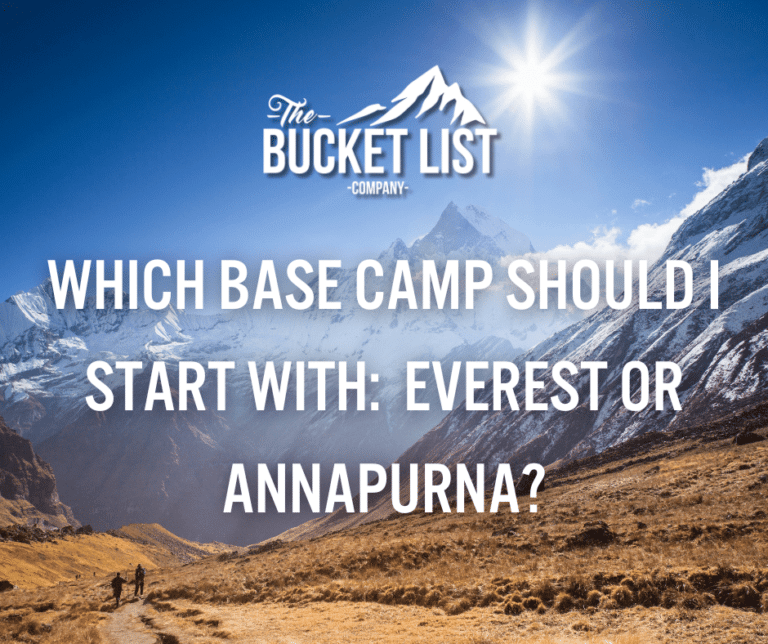So you’ve booked that once-in-a-lifetime trek, and now you’ve got several months of waiting patiently to set off on your Bucket List adventure. What should you do to pass the time? One word: train!
Whether you’re going trekking in the Sahara Desert or climbing Mount Aconcagua, training is essential to ensure that you reach your goal – and to make the whole experience more enjoyable. Here are our top tips for how to train for a trek…
Start early
Here at The Bucket List Company, we allow clients to book trips in advance up to 2021 to spread the cost. This gives you plenty of time to get your fitness levels up, which will help you with the physical exertion of trekking, as well as acclimatisation. With an early start, you can create a training plan that eases you in gently. Whatever you do, don’t leave it to the last minute, because it will impact your experience!
Head to the hills!
Unsurprisingly, the best training for hiking is – well – hiking! It’s so important to get your muscles and joints used to the motion of trekking so that you don’t tire as easily. Hill-walking also improves your cardiovascular fitness and gives you confidence in outdoor environments.
Carry weight
Hiking is all well and good, but it’s key to remember that on a Bucket List trek, you will be carrying a backpack with some of your daily items inside. Therefore it’s important to hike whilst carrying weight so you can get used to how it feels, as well as strengthening the muscles in your stomach and back to reduce any aches and pains during your trip.
Get running
Particularly for treks at altitude, one of the best forms of training is running. Generally speaking, the fitter you are, the quicker you will adjust to the altitude. Running is one of the quickest and most efficient ways to boost your aerobic fitness, and it will also get your legs used to hiking.
A healthy diet
Of course, you can do all the exercise you want, but if you are eating unhealthy food – and too much of it – you will not be giving yourself the best chance of having an easy-going experience in the mountains. A well-balanced diet increases your energy levels and gives you the fuel you need to do your training. Also eating foods containing good bacteria – or taking a supplement – will cultivate a healthy gut flora – which is all-important for preventing stomach upsets that can be contracted in some countries.
Practice using your gear
If you’ve never been trekking before – or if you’re going for your first mountaineering experience – your trip may involve using equipment that you’re unfamiliar with. Whilst we provide training in using any specialist gear during our trips, it’s wise to have a go before you depart, too. Even if you’ve just got a new pair of hiking boots to break in, or trekking poles to get used to, make sure you get out and practice using your new gear.
Prepare for winter
Another aspect of your trip that training can help you to prepare for is the weather. Mountains are usually home to rather changeable climates, so you will give yourself the upper hand if you get used to trekking (and camping) in a range of conditions.
Join a training weekend
Finally, the best thing you can possibly do to prepare yourself for a Bucket List Company trekking trip is to join one of our specialist training weekends!
These are held in the Peak District or Brecon Beacons National Park and are led by our expert UK guides. We go for some nice walks in the hills, and host Q&A sessions, kit workshops and generally get a feel for the Bucket List trekking experience!
To find out more about how to prepare for a Bucket List trek, or to join one of our training weekends (for just £50 per month over three months), call us on 01769 309 007

 Basket
Basket




